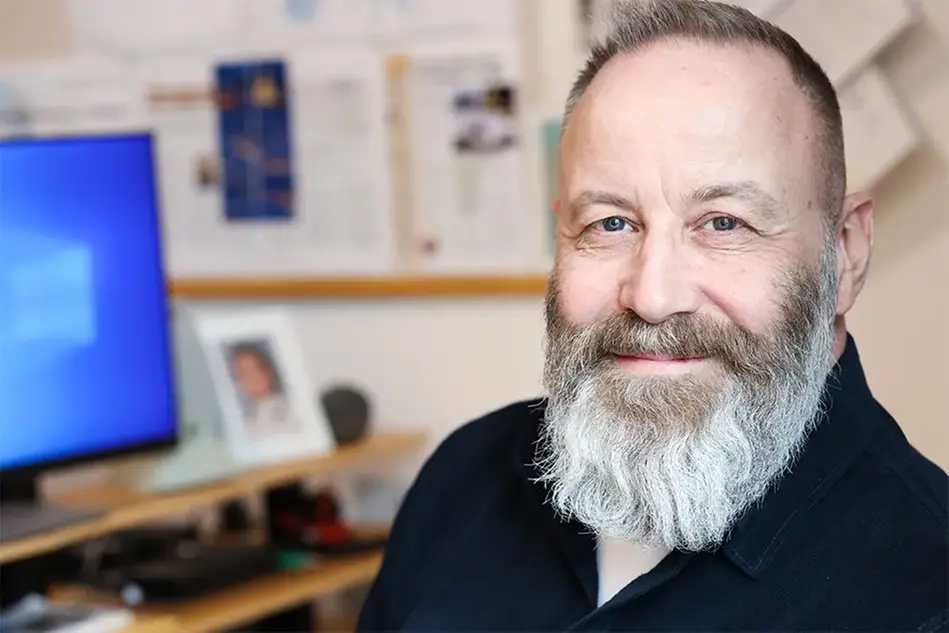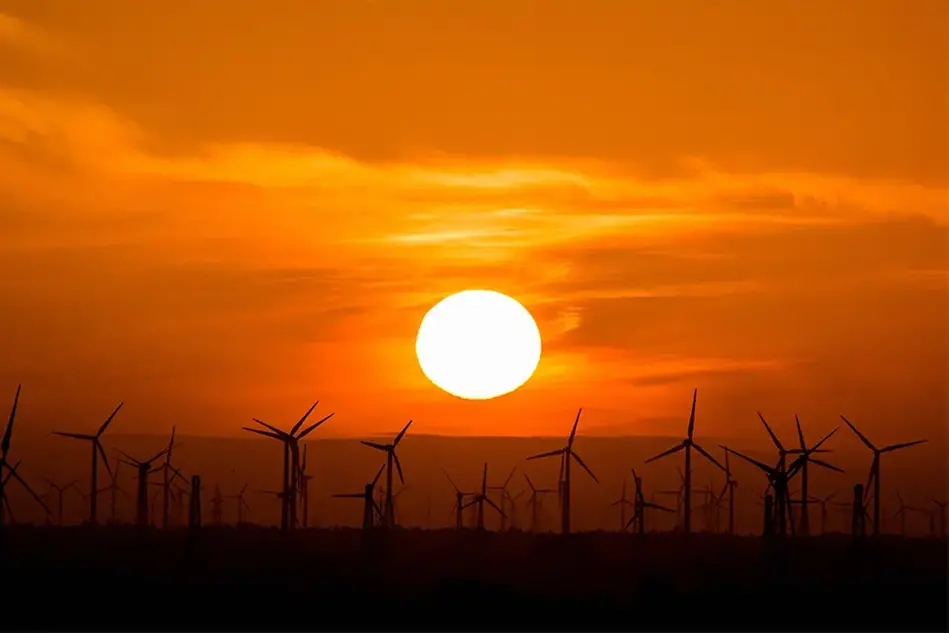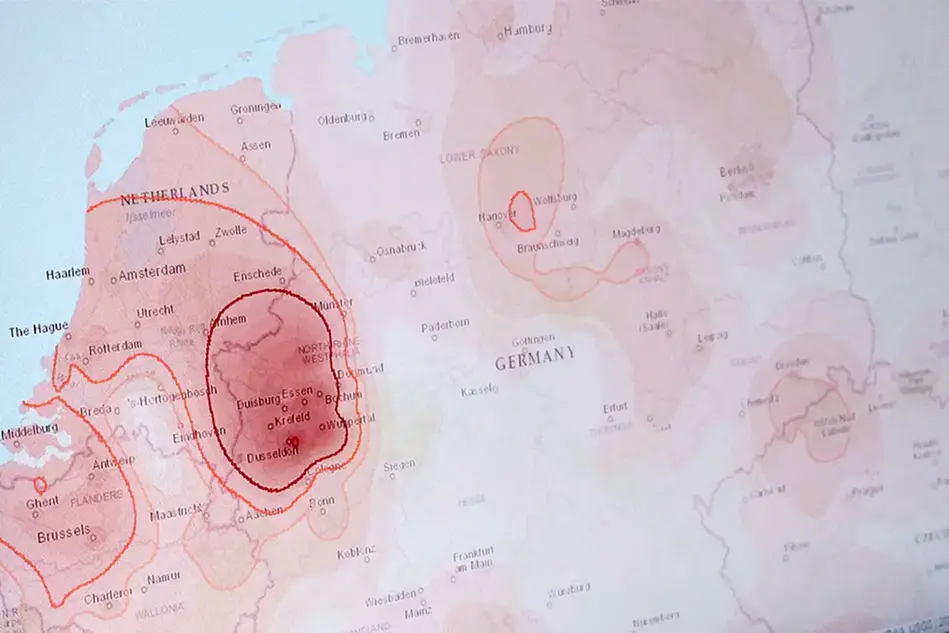Professor’s portrait: “Being a researcher is like being an artist – you create and are passionate about what you do!”
Creating a sustainable society has long engaged Urban Persson, Professor of Renewable Energy Systems at Halmstad University. With his research in district heating, he hopes to contribute with new knowledge and methods for moving from a fossil-fueled to a renewable society.
”District heating is a recycling technique, not of material things, but of energy. That is why I am so fond of district heating. It is one of the few technologies in the energy sector that is based on the principle of recycling.”
Urban Persson, Professor of Renewable Energy Systems
Climate change is something that is affecting the entire globe. This is shown by temperature rises, extreme weather, droughts and floods. In Europe, the ambition is to be carbon neutral by 2050, which means a balance between emissions and absorption of carbon dioxide – as a cycle. The development of district heating can be one way to reach that goal.
Urban Persson’s research is about moving from a fossil-fueled society and energy system to a renewable one. With his research, he develops models and calculations for how, when, where and what it will cost, which techniques can be used and how political support programs can be designed. Urban Persson’s interest in using the earth’s resources more efficiently goes back a long way.
“Already as a teenager, I thought about human consumption of resources. I am driven by an intuitive feeling that we should not take more than we need and be respectful of ‘mother nature’. We need to reduce waste in all forms and increase the proportion of recycling”, he says and continues:
“District heating is a recycling technique, not of material things, but of energy. That is why I am so fond of district heating. It is one of the few technologies in the energy sector that is based on the principle of recycling. If Europe is to be carbon neutral by 2050, we need to work in all sectors: transport, industry and housing. When it comes to district heating, it is first and foremost about supplying homes and buildings with resource-efficient heating, but district heating also means an infrastructure that contributes to increased efficiency within the entire energy system and which also enables more use of renewable energy.”

Urban Persson, Professor of Renewable Energy Systems, explains that district heating is a technique used to recycle energy.
Dual competencies became door opener
Researching on district heating was not entirely obvious for Urban Persson. Instead, he began his academic career in social anthropology and studied man as a cultural creator. He also was interested in language and music.
During the 1990s, environmental issues began to receive more attention and it was during this period that Urban Persson made a trip to California, USA. It rekindled his interest in resource use and the environment.
“I travelled around the area of San Diego and strongly remember how I saw a wind farm as a silhouette at sunset. I had long nurtured an environmental commitment and a growing insight between the climate, the environment and energy. There were already movements that had begun to understand that we must leave fossil fuels and find a more sustainable way of organising our society”, says Urban Persson.

A trip to San Diego awoke Urban Persson's interest in sustainability.
After that, Urban Persson decided to start studying again. He studied the Mechanical Engineering programme with a focus on energy and environmental technology. Courses in wind power technology, solar energy technology, efficient energy use and bioenergy brought him to Halmstad University. This was followed by doctoral studies where his supervisor was Sven Werner, former Professor at Chalmers and Halmstad University and today a Senior Professor at Halmstad University.
“They were looking for a person with dual competencies for an interdisciplinary project. So, my background as a Mechanical Engineer in renewable energy and previous studies in social anthropology became a door opener”, says Urban.
Energy recycling with residual heat
In his doctoral dissertation, Urban Persson began his work to develop models for expanding district heating. The results were applied within the EU project Heat Roadmap Europe, which wants to make energy recycling more efficient in Europe by utilising residual heat from industry and electricity production.
“Based on local contexts, we developed models to calculate the cost of investing in district heating networks in places where there is no district heating today. To this day, I still work with that. Using geographic information systems, GIS, you can make calculations, manage and analyse data in a geographical context. So, you work not only with numbers but also with linking the information on a map”, says Urban Persson and continues:
“The difference, from the models used before, is that they analyse the need at a national level, which means that you do not capture the needs and possibilities of district heating, which is a local infrastructure. You cannot distribute district heating more than a limited number of kilometres, which is a big difference compared to electricity and gas that can be transported over much longer distances. The innovation with Heat Roadmap Europe was that we proposed a combination of national energy modelling and local GIS analyses.”

Geographic information systems, GIS, is used to make calculations and analyses in a geographical context. Later, the calculations can be visualised on a map.
Calculates the heat demands of the future
Today, Urban Persson works in several projects and collaborates with researchers from, for example, Ålborg in Denmark and Flensburg in Germany. Together, they collect, produce and analyse the data that can tell how much industrial residual heat is within reach of district heating. They also estimate future heat demands for different countries and try to distribute the information on maps using GIS tools to see how large the heating needs are, if they will decrease and where changes will have the most effect. He is also a consultant at EU level concerning new legislation regarding the Renewable Energy Directive and Energy Efficiency Directive.
“Those projects are about making estimates and increasing the understanding of what the legislation looks like and how it needs to be designed, what objectives are reasonable and what technologies we need to develop to achieve a more sustainable society”, says Urban Persson.
“There is a lot of energy here”
Urban describes that becoming a professor means, above all, a recognition. He likes to represent a university such as Halmstad University.
“It is a creative, young and a smaller university. There is a lot of energy here, it goes fast and we are flexible. It’s moving and bubbling in the corridors!” he says and concludes:
“Being a researcher is like being an artist – you create and are passionate about what you do!”
Text: Anna-Frida Agardson
Photos: Anna-Frida Agardson and Pexels.
About Urban Persson
Urban Persson was born in Sveg in Härjedalen but grew up in Stockholm. He studied mechanical engineering with a focus on energy and environmental technology at Malmö University. He defended his dissertation in 2015 at Chalmers Technical University with the dissertation “District Heating in Future Europe – Modelling Expansion Potentials and Mapping Heat Synergy Regions”.
Urban became a docent in 2019 and on the first of May 2020 he became Professor of Renewable Energy Systems at Halmstad University. He is a member of the District Heating Group and the Energy Group, which consists of researchers at the University.

